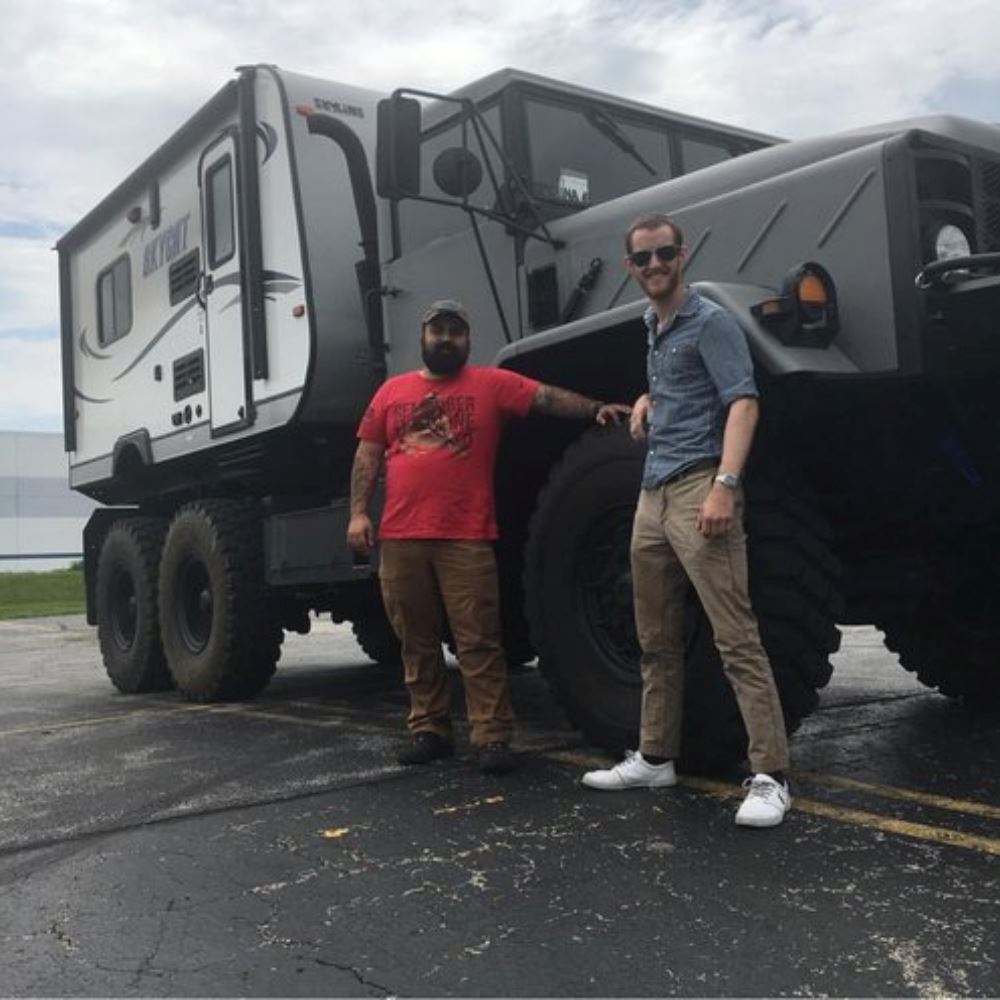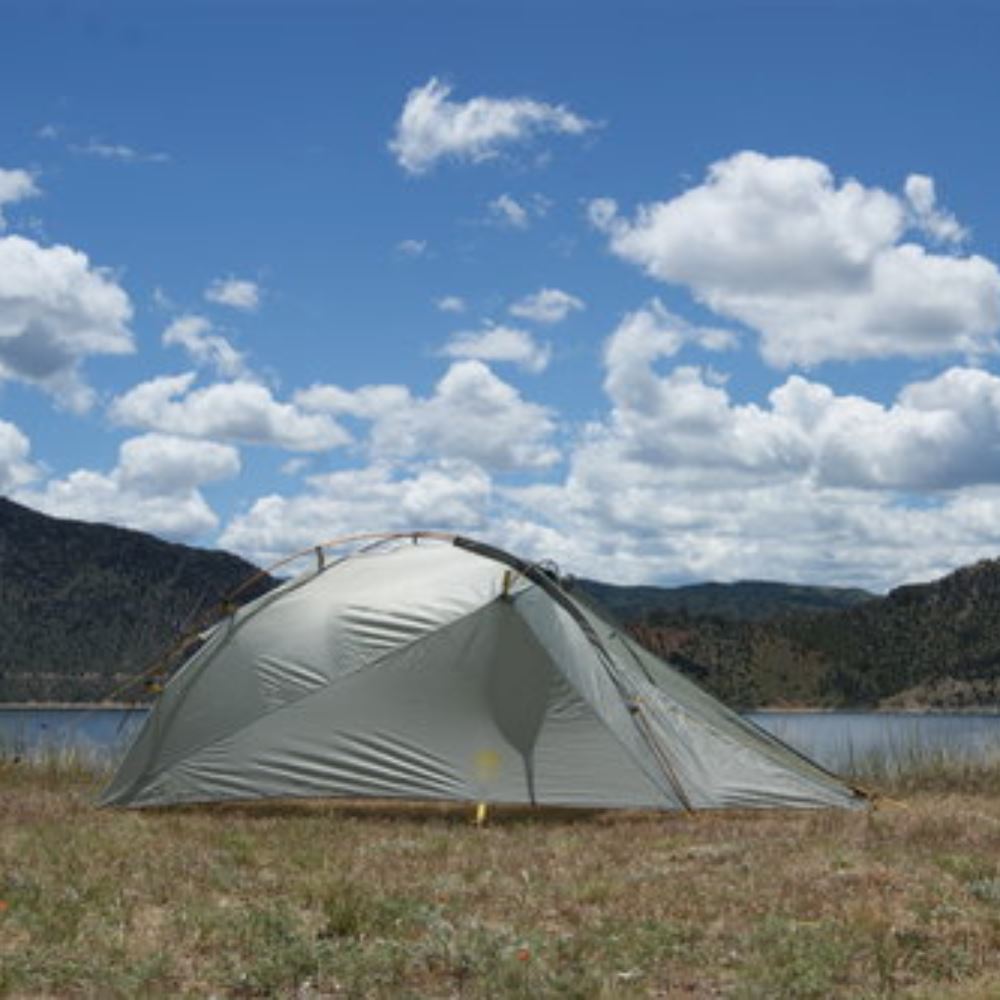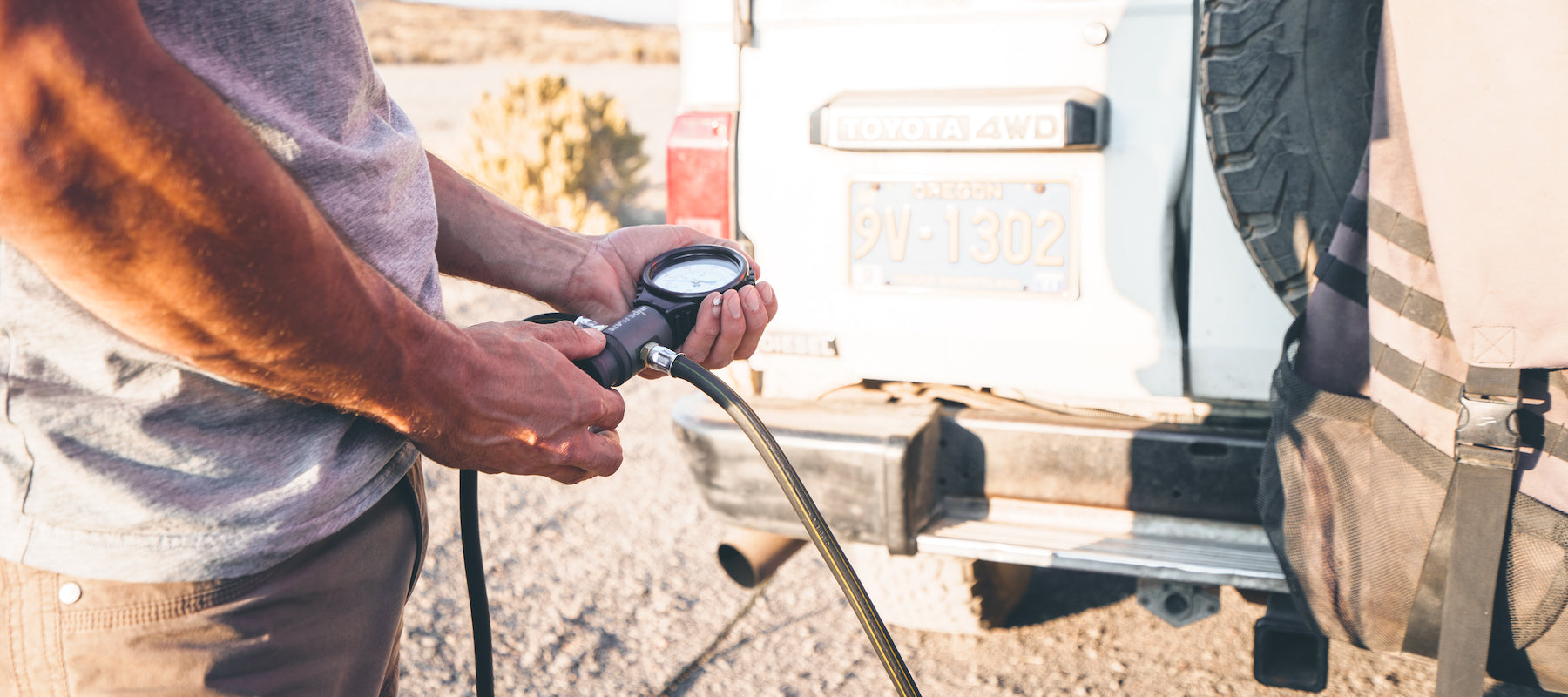In the interview below, Chris Buege tells us about MakeSafe international and the work they do. Oh, did I mention they drive around in a modified 1989 BMY M925A2 5 ton military 6x6 truck? More below.
Q: Tell us a little about yourself.
A: My name is Chris Buege, I’m 25, a Marine Corps Veteran, I’m slowly working on becoming a Doctor of Public Health, I’m an avid gamer, big into shooting sports, I’ve always spent a lot of time in the outdoors, I obviously love traveling, I am fascinated by all things mechanical but my true passion is medicine.
Q: How did you get started in overland travel?
A: Out of necessity, really. Starting MakeSafe I never thought that I would be doing any serious overlanding, at least not for my work. However, I always had an interest in going places most people can’t and seeing parts of the world that are completely untouched by mankind. The limiting factor was always time and money, now I have an excuse to spend both on something most people do as a hobby to better accomplish my mission and reach more people.
Q: Do you have any special training (medical/offroad/recovery/etc.)?
A: I’m an EMT, about to take my NREMT exam to make it official. I also have a good amount of training in Tactical Combat Casualty Care. I recently went through an intense 35 day High Threat Protection Specialist course offered through MiraCosta College by a company called SecFor International to become more effective in small team operations in hostile environments. I am always looking for more schools to attend.
As far as off-roading is concerned, that responsibility falls on my Operations Manager, Edgardo. He drove trucks in the Army throughout several combat deployments and has a bunch of off-road experience. I’ll be soaking in all the off-road and bushcraft training as well once I’m out in Africa, they have some awesome schools for a fraction of the price that you pay here.
“
When ISIS started really pushing through Iraq I decided I wanted to do something to help.
— Chris Buege
Q: Tell us a little about your rig.
A: It is a decommissioned 1989 BMY M925A2 5 ton military 6x6 truck with a 2014 Skycat 160b toy hauler fabricated on the back. The truck is powered by a Cummins 6CTA 8.3L turbo diesel putting out 240 hp and 740 lbf-ft of torque with an Allison 5AT transmission. The truck isn’t exactly the definition of modern luxury with its enormous leaf springs, lack of A/C, thinly padded seats, complete lack of insulation or sound dampening and nonexistent cupholders. Everything on the entire truck is mechanical... even the windshield wipers are pneumatic, haha. I’m all for the truck being Spartan though, far less things that will require fixing and I was still able to enjoy the 1,800 mile drive from Vegas to Wisconsin.
It averages 8.9mpg highway and we were getting 8.5 through the mountains of Colorado, this is a lucky anomaly as most of these trucks get 4-6.
Q: What made you choose to use this particular vehicle? Did you consider others first?
A: We were looking at outfitting a land cruiser with everything we needed and the price tag was getting up into the neighborhood of $80,000. That was more than our current rig including shipping. We also knew we could source parts pretty easily for the 5 ton, had team members with a lot of experience maintaining and operating them, and they use the 6CTA engines for marine applications pretty regularly in Africa so some engine parts are pretty readily available, shipping to Tanzania is also pretty reasonable so anything we can’t find there we can have shipped.
Q: What upgrades or changes have you made?
A: We are in the process of putting a Timbren SES kit to provide a little more shock absorption for the trailer so off road conditions aren’t so punishing on the structural integrity of the box. Once that’s complete we will be putting an exo cage around both the camper box and cab for both safety and to allow for more storage. The camper body can’t support much weight but a steel exo cage will allow us to create modular bolt on storage solutions to transport spare tires, gear, a dual sport bike, a zodiac, external water tanks, a generator or whatever else we might need for a mission.
Once this is complete we’ll be installing a Cummins Onan diesel generator and stripping the inside of the camper. When the camper is stripped we’ll be putting in a desk, improved living quarters, additional storage and a technology suite allowing us to manage operations on the go. Once our budget allows for it or the items get donated, we also have plans for a lithium battery bank, solar set up, a composting toilet, additional water tanks, a dometic portable refrigerator and other upgrades to make our rig fully self contained.
Q: What systems do you use for navigation?
A: Call me old school but I prefer paper maps and landmarks! I also have a Garmin Montana 650t and Tracks-4-Africa.
Q: Can you tell us about a time when things didn’t go as expected? How did you handle the situation?
A: We were getting ready to take the truck to an event and pretty much everything that could go wrong went wrong. The truck had been sitting for a while and the battery bank was completely dead. We tried jumping the truck and we got it to turn over but it wouldn’t start. We tried some ether, nothing. I realized that it wasn’t a self priming engine so obviously it was a fuel problem. I devised a plan to pressurize the fuel tank using a plunger and a bicycle tire pump. It worked and we got it started, but I later discovered that there was a priming pump in the engine bay that would have been way easier.
Let’s talk about MakeSafe International and the life saving services that it provides to developing countries....
Q: How did MakeSafe International come to be?
A: When ISIS started really pushing through Iraq I decided I wanted to do something to help. I was about to head over to join up with the Kurds, but I realized I wouldn’t be helping and would probably just be making the situation worse. Instead I decided to start a nonprofit with my long time best friend, Kyle. We underwent a massive amount of planning, training, research, preparation and networking and as a result MakeSafe was born.
Q: Please describe your Explosive Ordnance Disposal, and Emergency Medical Training Services.
A: Our EMS program is divided into two steps. If it is an urban location we find a place in the community to set up an automated dispatch system called “Beacon” that was developed by another nonprofit organization called Trek Medics International. Once that is established we will train the local taxi drivers basic medicine to treat injuries or illnesses, stabilize a patient and transport them to the nearest medical treatment facility.
If we are working in a small and rural community, we focus on improving overall public health. We aim to teach first aid and more advanced techniques to anyone interested in the material, educate everyone in sanitary food handling and storage procedures, assist in the construction of latrines and help develop infection control procedures for the community. Our curriculum in rural health education is largely based on a book called Where there is no Doctor. If possible, we will also set up Beacon systems in rural communities in case a need for additional resources arises.
The EOD services are very much in the research and development phase, but more information will become available soon after we complete our first mission in Africa.
Q: Can you tell us approximately how many explosives have you safely disposed of to date?
Unfortunately, zero as of right now. There is an ungodly huge list of expenses necessary to launch Counter IED and Unexploded Ordnance (UXO) removal services when you take into account the equipment, staffing and insurance requirements. The medical side of our operations turned out to be a great way to get our foot in the door and put our name on the map in Africa. Once we’re set in Tanzania, we are right next door to several countries affected by landmines and we will be doing everything in our power to start removing them.
Q: What countries have you provided services to so far?
A: Since we started MakeSafe in 2015 we have spent the majority of our time building our team, educating ourselves and carefully planning our first overseas operations. Operation Serengeti Lifeline in Tanzania will be our first international project.
We started a project here in the US two summers ago. Temperatures in Vegas were reaching up close to 115 degrees so we bought a ton of water bottles, passed them out and made sure the tourists, EMS professionals and homeless population on Fremont St. were able to keep hydrated in the heat. It’s not as exciting as what we have coming up, but it was a lot of fun and people still remember us down on Fremont St.
Q: Are there plans to expand your reach to other countries? If so, where?
A: By all means. We hope to set up a base of operations in Tanzania and will most likely be working our way out to Kenya, South Sudan, Uganda and any other country that requests our assistance. Tanzania is a great place for us to start, but we have no intention of ending our work there.
Q: Please tell us a little about the communities in which you serve.
A: Our first work will be done in a city called Mwanza. It is a pretty developed city but their EMS system is in its infancy. The city has a population of around 700,000 people and is located on the coast of Lake Victoria. From there we will be moving to Ukerewe, an island in Lake Victoria that is also located in the Mwanza region. Mwanza also happens to be the home of our Medical Director, Dr. Marko Hingi.
Thank you Chris, for taking time out of your busy day to speak with us. There’s no doubt in our minds, you guys are bonafide heroes. Keep fighting the good fight, and stay safe out there.
“
MakeSafe International is a non-profit organization committed to clearing explosive hazards, treating victims, and providing peace of mind to inhabitants of hostile environments around the globe. - Co-Founded By U.S. Military Veterans -
— MakeSafe International
You can learn more about the great work these guys are doing at www.makesafeintl.org
Please consider making a donation to their gallant efforts.


![Ford Celebrates 100 Years of Trucks [Video]](http://overlandkitted.com/cdn/shop/articles/Ford_Celebrates_100_Years_of_Trucks_Video_-_1000x1000_fee93b4c-27a2-4988-999a-7ce9233bfc90.jpg?v=1663789937&width=1000)

